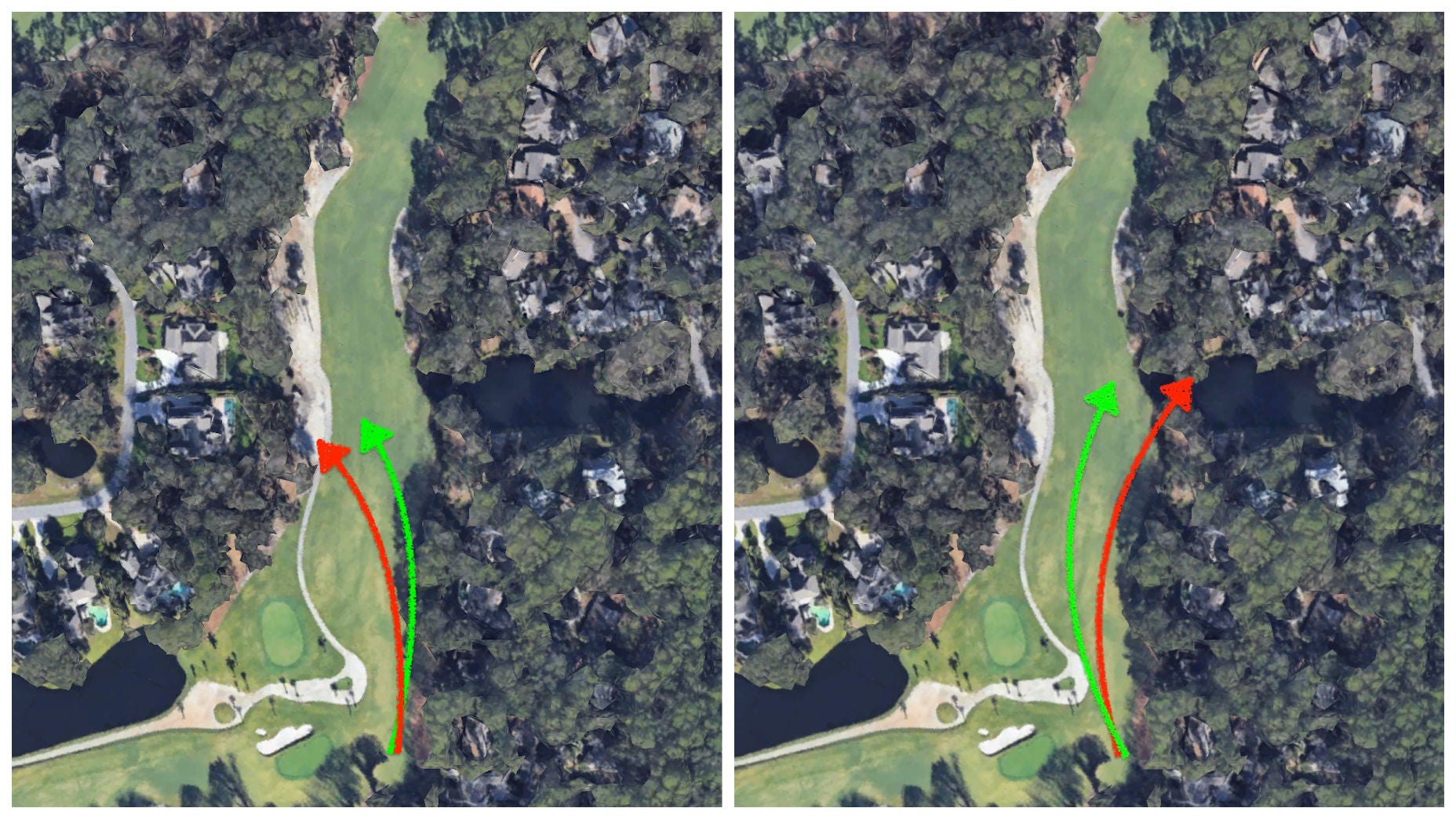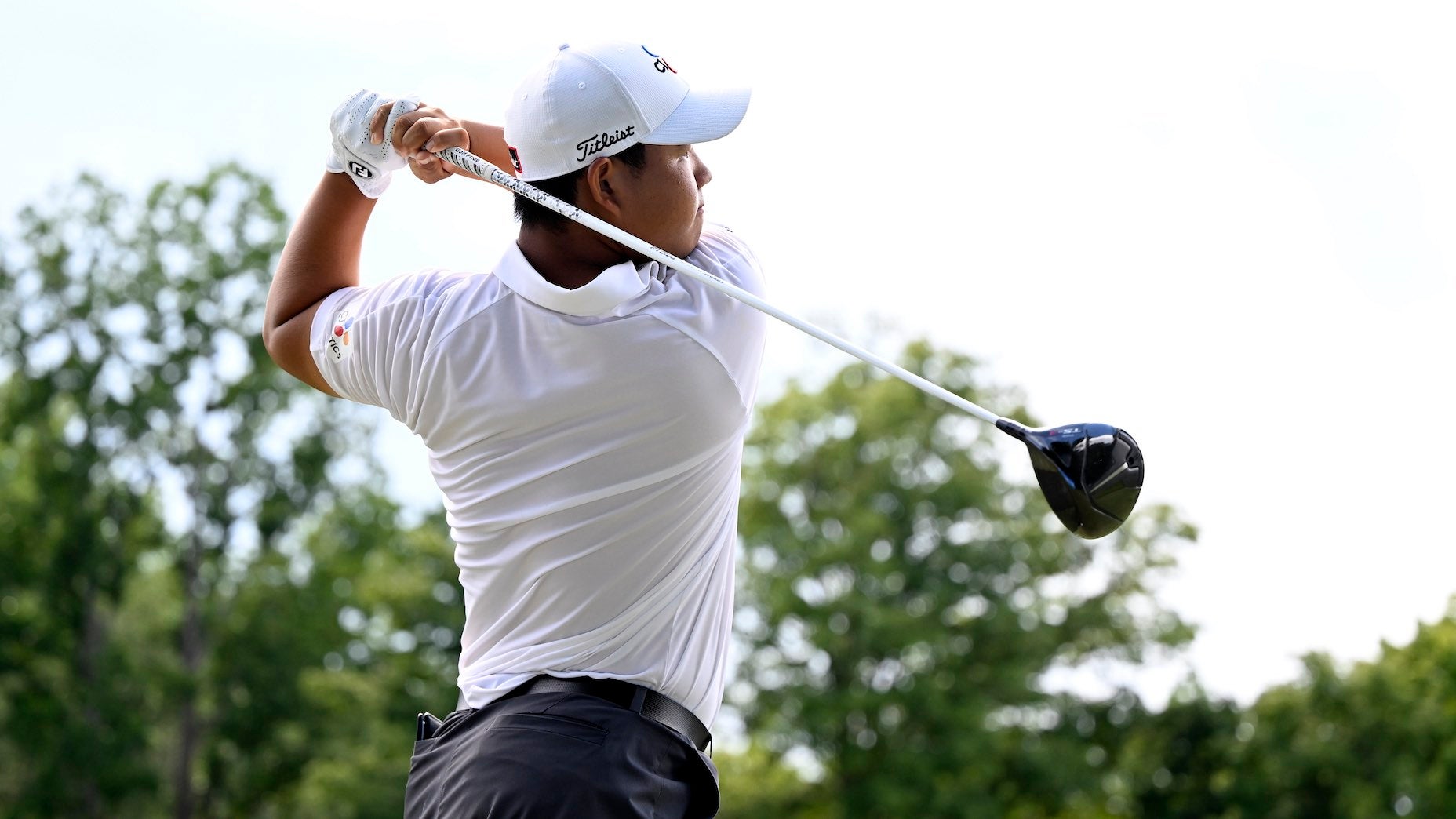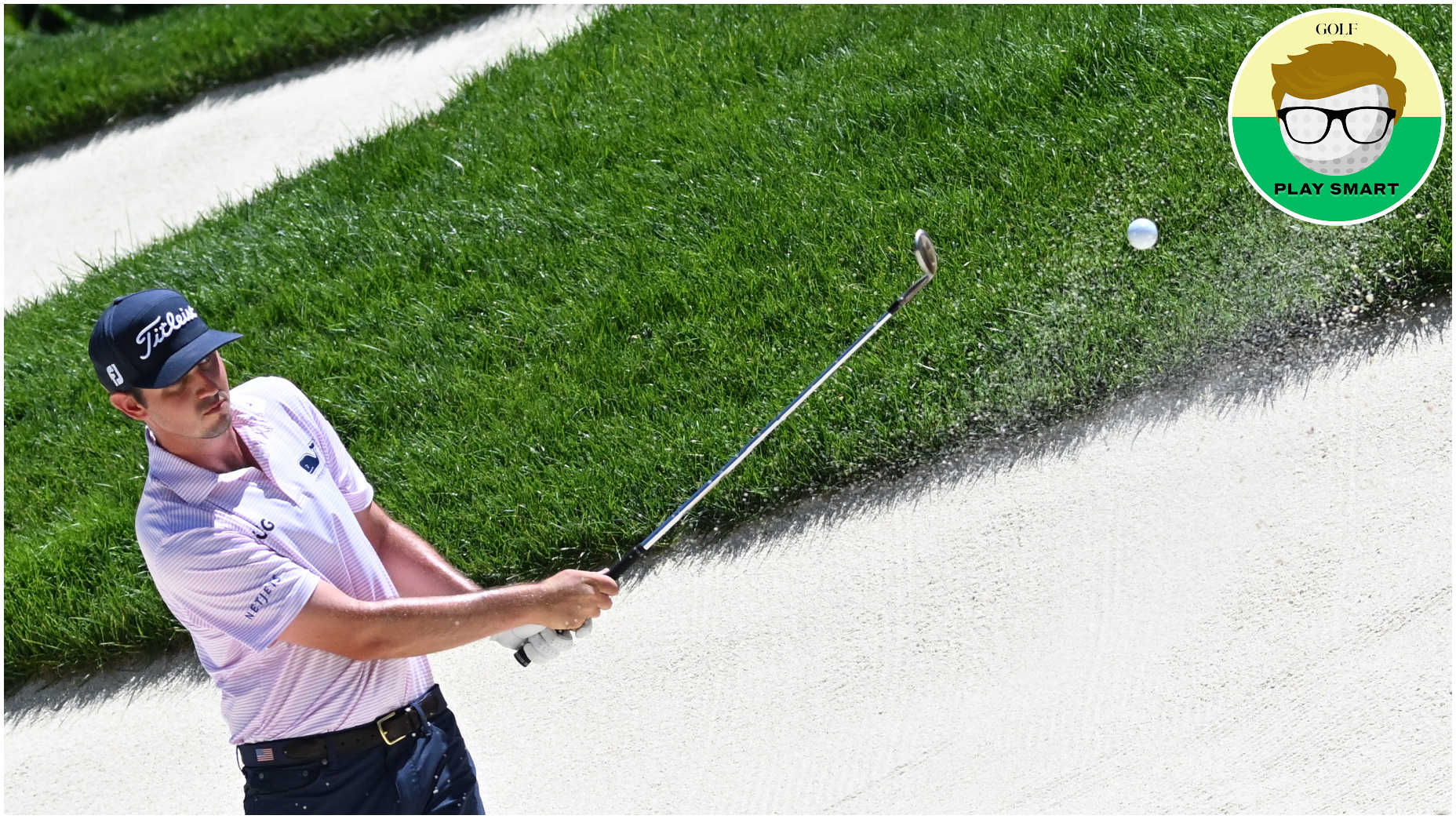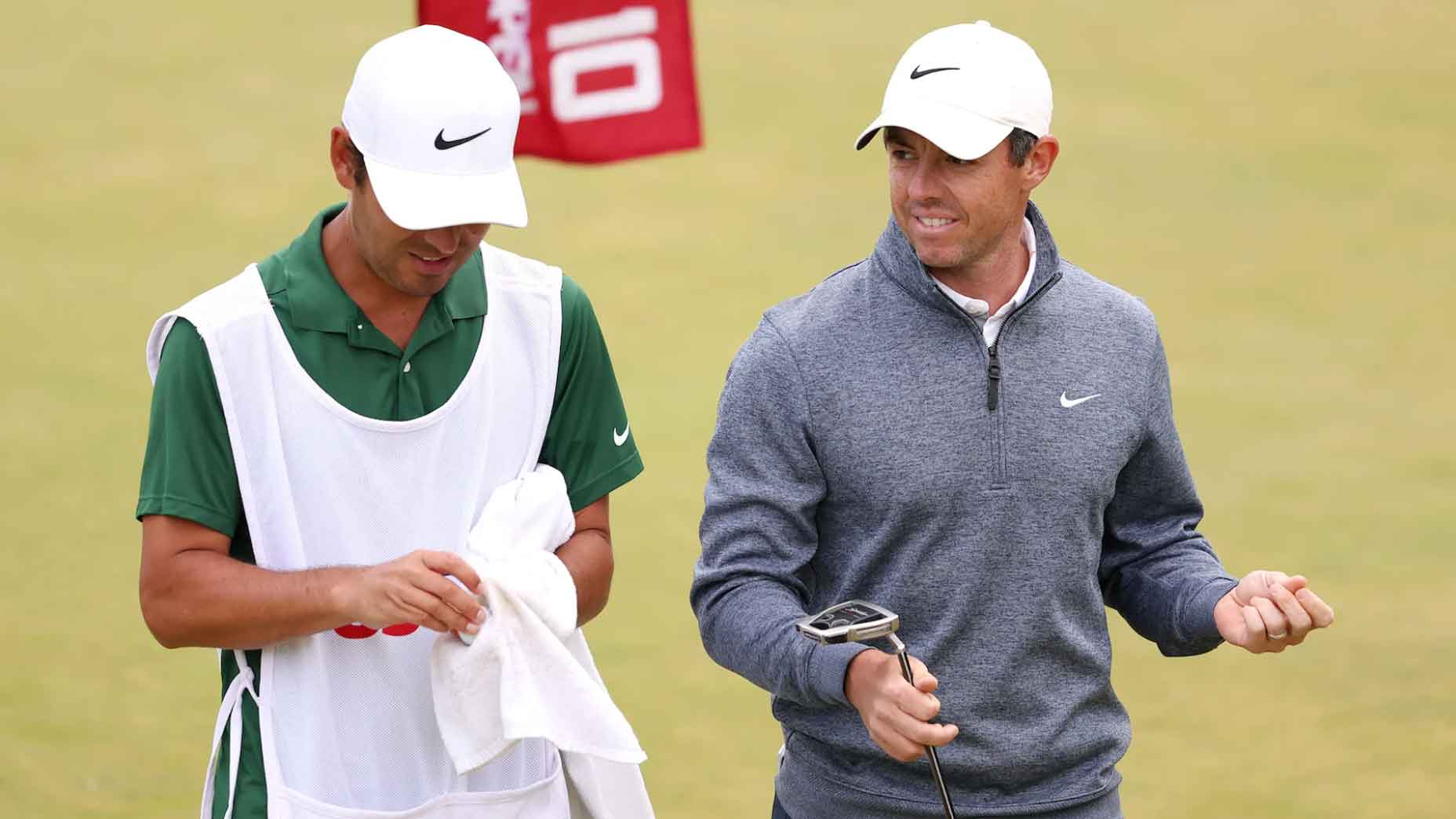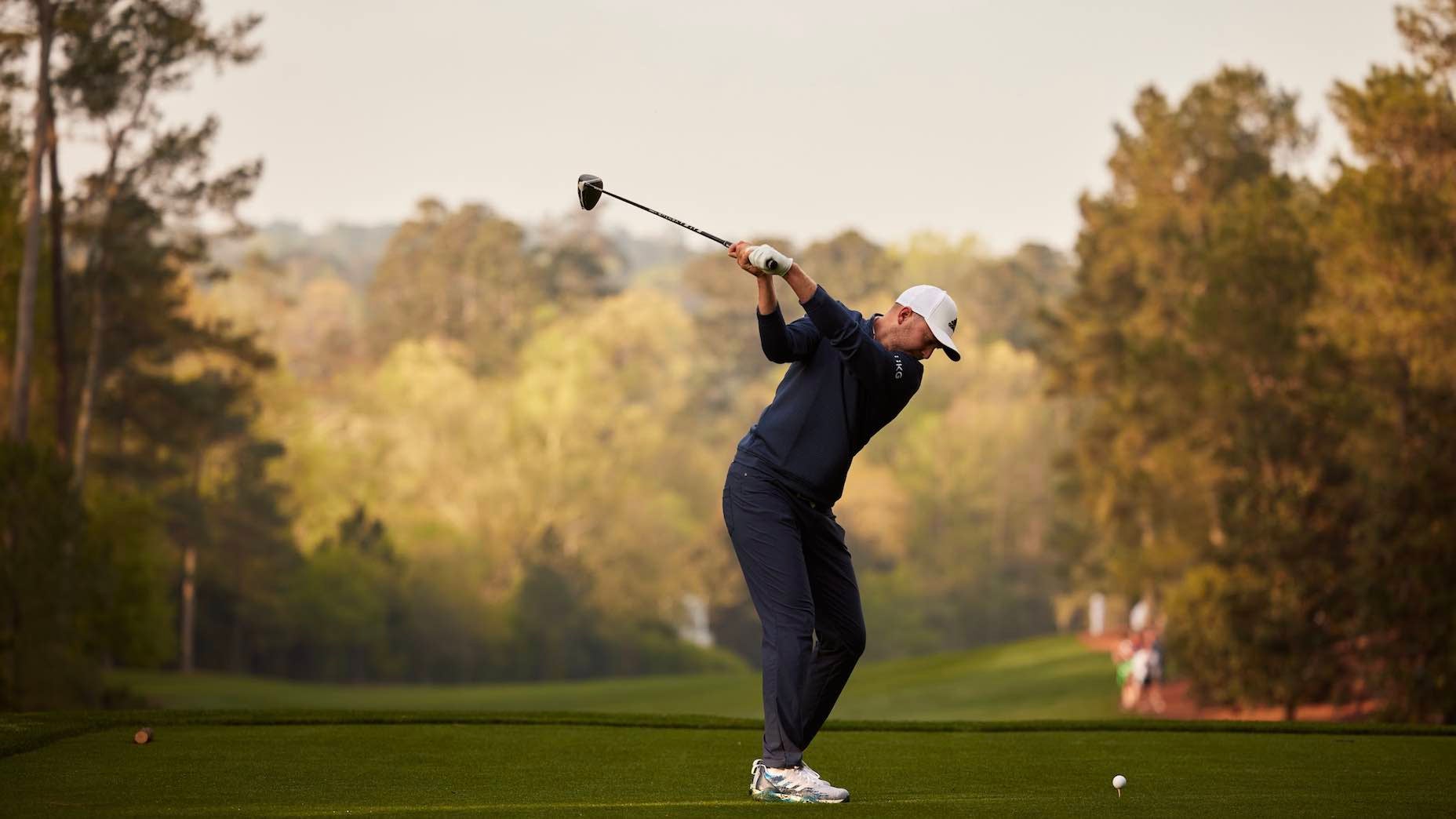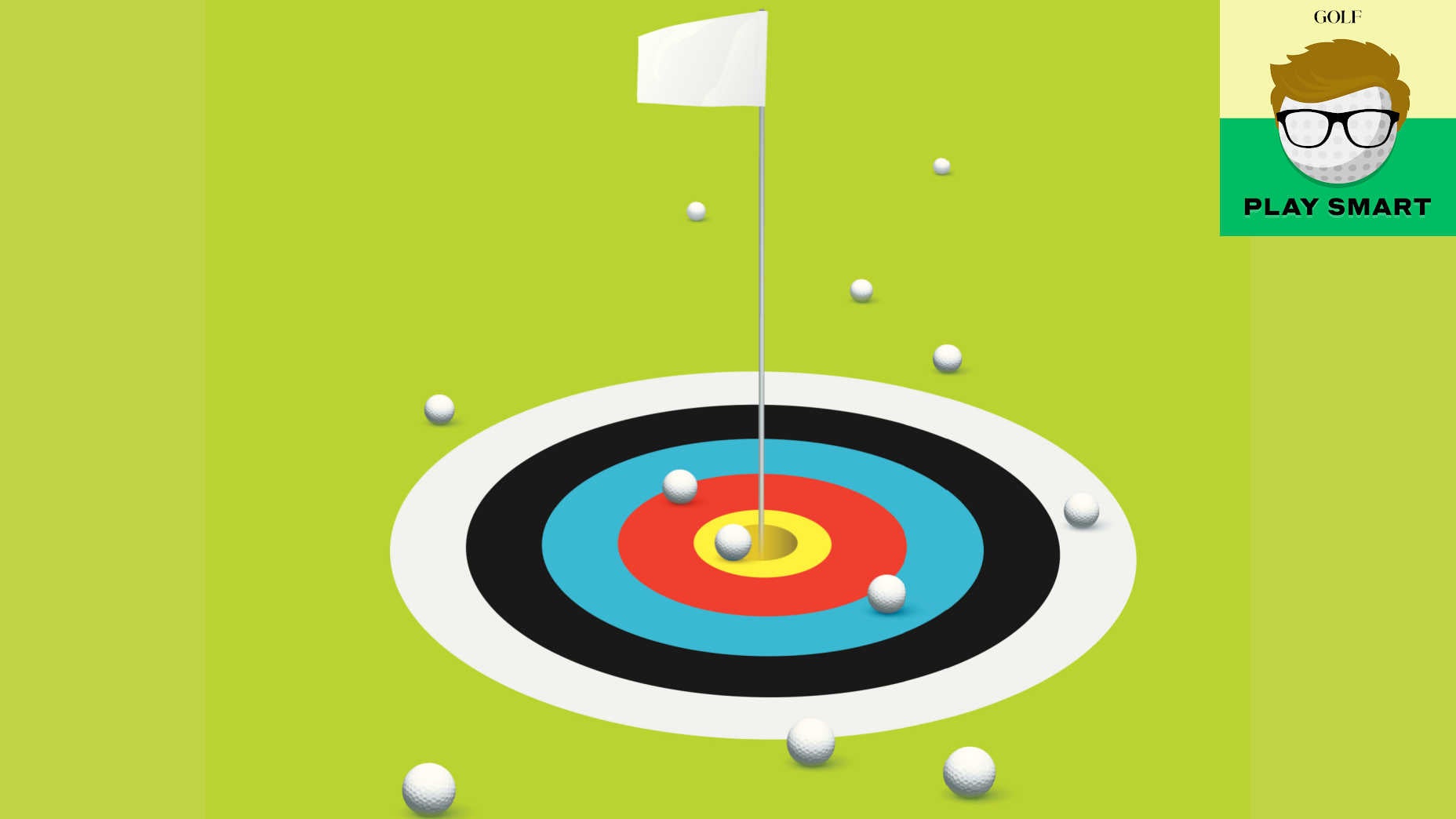Golf is hard. Not sure that’s considered a particularly revolutionary or controversial take, but it is something worth reminding ourselves of from time to time, because it can help us focus on doing all the little things that can help make golf a little easier. Necessity, after all, is the mother of invention.
Along those lines, let’s talk about tee boxes. Specifically, how you can use them to help you hit more fairways, and therefore, have more fun.
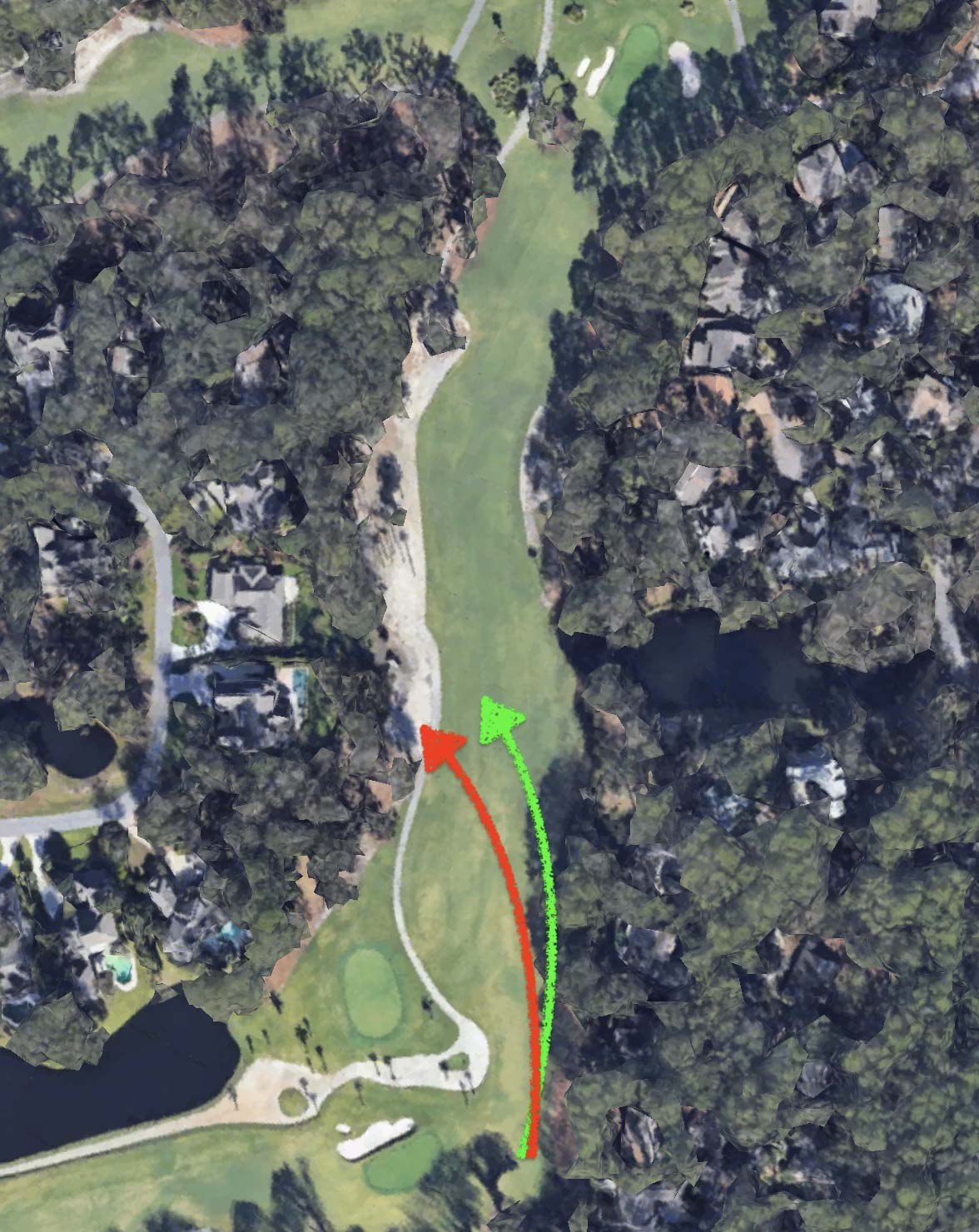
1. Peg it left, aim it right
The hole we’re looking at here is the 6th at Harbour Town Golf Links, one of my favorite courses on the planet. It’s a pretty straightaway hole, with a waste bunker left and OB flanking both sides. But just because the hole is straight, that doesn’t mean you should aim straight down the middle.
If you tend to hit a draw, or your miss is a hook, aiming straight down the middle means overdoing your stock shot will leave you in trouble.
Instead, come at the fairway from an angle: Peg on the left side of the tee box, and aim down the right side of the fairway. Hitting across the fairway means that as the ball travels, it’s crossing over more of the fairway’s surface areas.
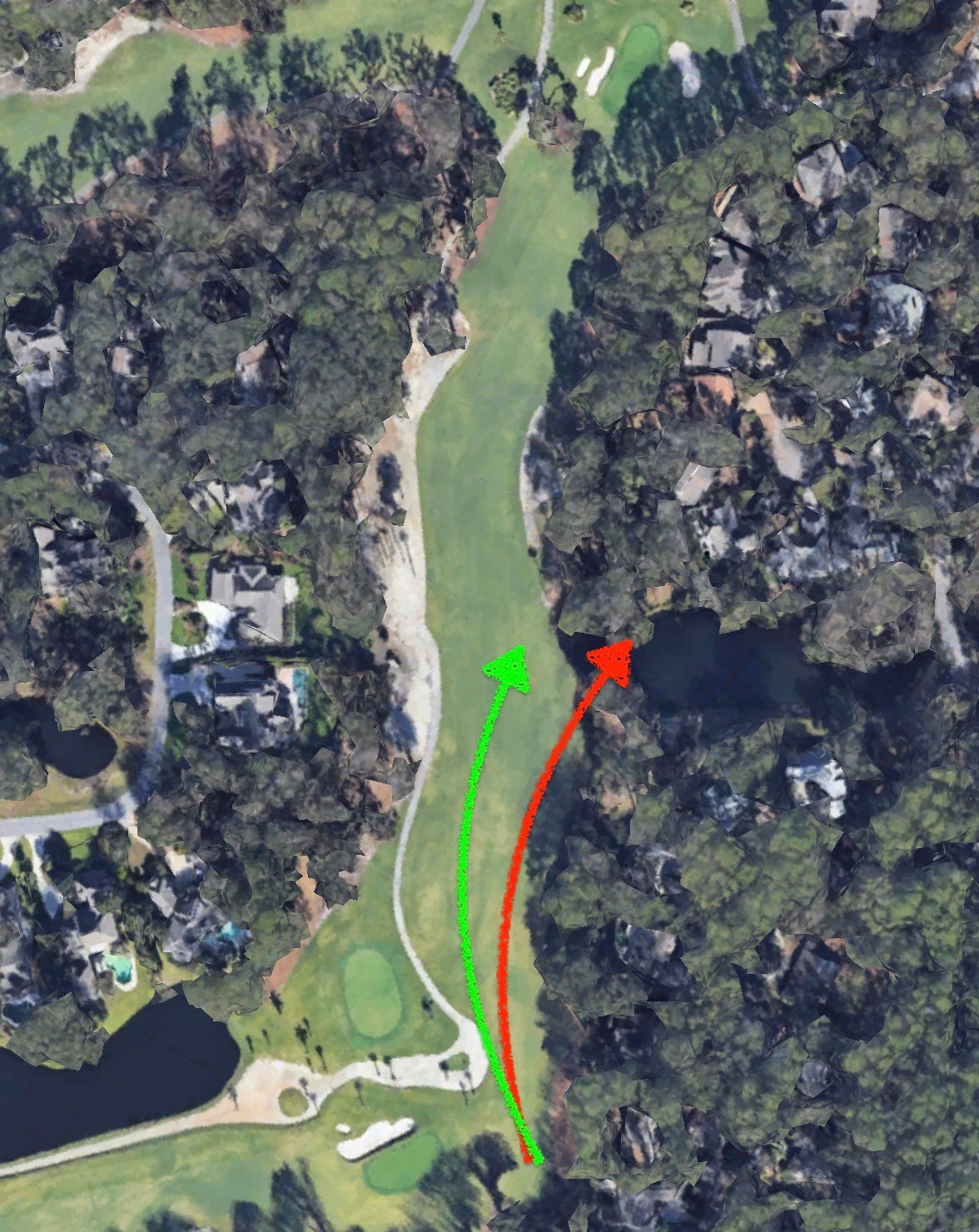
2. Peg it right, aim it left
Slicers or faders, by contrast, should do the opposite. You never want an overcooked shot to be in trouble, if you can avoid it. That’s why any golfer who tends to hit shots left-to-right would be well served coming at the fairway from the right side of the tee box, and aiming down the left side.
Need help unriddling the greens at your home course? Pick up a custom Green Book from 8AM Golf affiliate GolfLogix.
